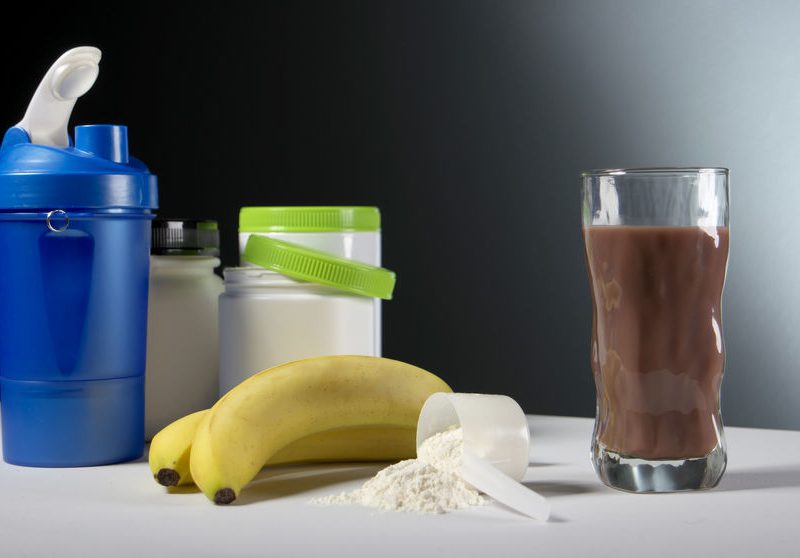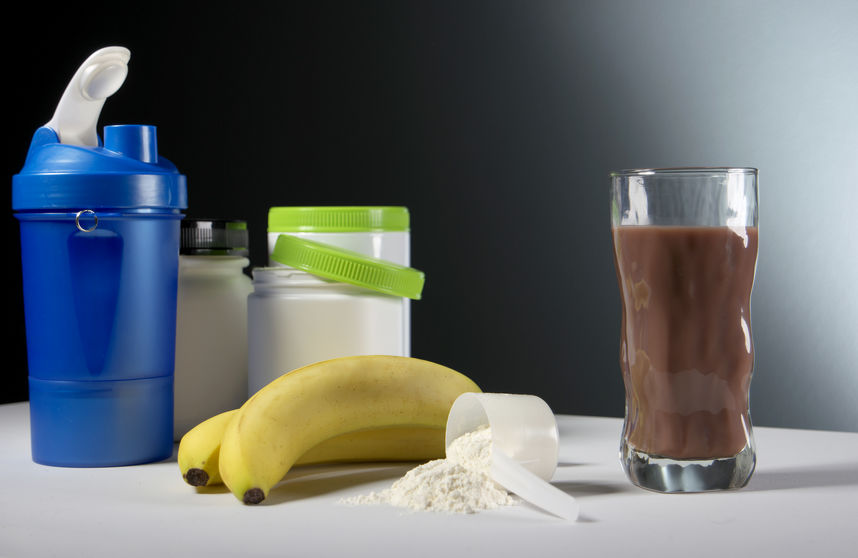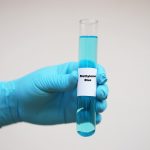
In an effort to maximize energy stores during a workout, and ensure adequate recovery post-workout, proper nutritional fueling provides the key to success. Knowledge in the kitchen can rival gym savviness in terms of utmost importance when sculpting a physique and cultivating strength.
Contrary to claims made by supplement companies, glucose remains the human body’s preferred energy source. An ideal pre-workout meal, therefore, includes slow-burning forms of glucose (complex carbohydrates), the optimal provider of sustained energy.

Foods that are high in fiber, such as a grainy bread, brown rice, oatmeal, quinoa, whole-wheat couscous/pasta and sweet potatoes, serve as perfect examples. Pairing such options with a lean protein source, such as eggs/egg whites, lean turkey/chicken/beef, or low-fat dairy, creates a balanced meal, guaranteed to get hard-working athletes through even the most grueling exercises.
Fueling with the Ideal Macro Ratios
The best protein source to replenish the amino acids, the building blocks of lean muscle tissue that get broken down during the workout, has traditionally been whey protein concentrate or whey protein isolate, in powder form, hydrated with water, fruit juice or skim milk.
Ideally, experts suggest looking for a whey product that has been micro-filtered at a cold temperature. Vegan protein powders, derived from hemp, pea or pumpkin, have recently been gaining in popularity as alternatives to whey. Research has determined that these proteins are just as effective as whey for fostering muscle growth, and that the best delivery system regardless of protein source is prompt ingestion through liquid means (protein shakes). Plant based powders may also contain higher, if not still legally safe, levels of heavy metals.
A shake is convenient to bring to the gym; many athletes bring the measured powder in their shaker bottle and simply hydrate it immediately after racking the weights from their final set.
A slight insulin spike facilitates the body’s ability to shuttle post-workout protein into the bloodstream, where it can readily go to work. This is the best time of day to enjoy “simple carb” sources that will drive up insulin just enough to be effective: fresh or dried fruit, organic raw honey, rice cakes or a high-glycemic-index cereal such as Rice Chex. Coupling this with the protein shake creates a perfect and easy-to-digest meal. Most athletes aim for a 2:1 – 3:1 ratio of simple carb grams to protein grams. Experimentation helps determine what works best for each individual.
A strength-training workout accelerates metabolism, which is a highly desirable bonus. Rather than risk reversing this dynamic effect with the consumption of slow-digesting fats, this macronutrient is best kept to a bare minimum both pre-and post-workout. Most athletes aim to include less than 6-8 grams of fat during these fueling times.
The Whole-Foods Re-Fueling
Within two hours of the post-workout shake/simple carb fueling, consuming a meal of regular whole foods allows the anabolic process to continue seamlessly. This is where the addition of fats comes into play. Complex carbohydrates, lean protein, dark green leafy veggies and a small amount of “good” fats (avocado/coconut oil/nuts/nut butters) make for an ideal meal.
One example of a balanced post-workout meal might be as follows:
~ ½ sweet potato OR ½ cup cooked brown rice
~ 4-5 ounces lean turkey/chicken/fish (salmon is always an excellent choice, rich in omega-3 fatty acids)
~ 1 cup steamed green veggies OR mixed green salad with low-fat balsamic dressing (oil and vinegar)
Delicious and nutritious fuel such as this should keep the body/metabolism satisfied for the next 3-4 hours. Of equal importance is adequate hydration throughout the day, since higher amounts of both fiber and protein necessitate extra fluid in order to “move through” the body effectively.
Clients may ask how to proceed with this meal if they train in the evening and plan on bedtime being within an hour or so of consuming their post-workout fueling. If remaining awake for another few hours is simply not an option, there are a few suggestions you can make to ensure the best possible results.
The shake can go a bit lighter on the grams of protein and the simple carb/protein ratio may be lowered. Then, a whole-food meal that is on the lighter side can be consumed an hour later, stressing the importance of including all essential macronutrients. A client of mine opts for scrambled eggs and toast at this meal.
Fueling with Supplements
Many athletes and bodybuilders opt to supplement with a pre-workout fueling drink product, such as creatine or combination drinks with various ingredients intended to decrease muscle fatigue, increase blood volume, and boost energy. Some people have success with these supplements and others can have unpleasant sometimes dangerous reactions.
In addition, proper recovery from training is essential regardless of whether one’s fitness goal is to burn fat or build muscle. While meals provide all one really needs, certainly some supplements can give an added boost to the recovery process. The wide range of products and substances available on the market today can create plenty of confusion and warrants its own article.
However, one supplement with which I have had tremendous success when paired with a post-workout shake is called Ignition, made by 1stPhorm.
Ignition signals the body to begin the process of repair by spiking insulin and replenishing glycogen stores.
Ignition consists of pure dexanhydrous glucose, which delivers glycogen directly to the muscles more effectively than any other simple carbohydrate source. Spiking insulin levels to allow maximum protein assimilation, as previously mentioned, creates an optimal environment for recovery and protein synthesis.
When an insulin spike occurs, the muscle “cell doors” open, enabling the body to retain and utilize a much higher percentage of protein by pushing it directly into the muscle. Ignition bypasses liver storage and helps the body dive into recovery mode much more effectively. The more time the body spends in recovery, the better the results.
The Fasting Mindset
Despite the abundance of literature endorsing what is written here, there will always be clients who insist on working out in a fasted state, such as, first thing in the morning before breakfast. While there is research supporting this theory — to an extent — it remains to be seen whether such a trend can withstand the test of time. Check our website for upcoming articles delving deeper into this topic. In the meantime, remember that while it is our job to move clients safely and effectively towards their goals, we are powerless to insist that they adhere to all aspects of our advice.
References:
www.healthline.com/nutrition/best-pre-workout-supplements#section1
www.inkin.com/blog/en/The-Best-Pre-Workout-Foods
www.blogilates.com/2996785799/






